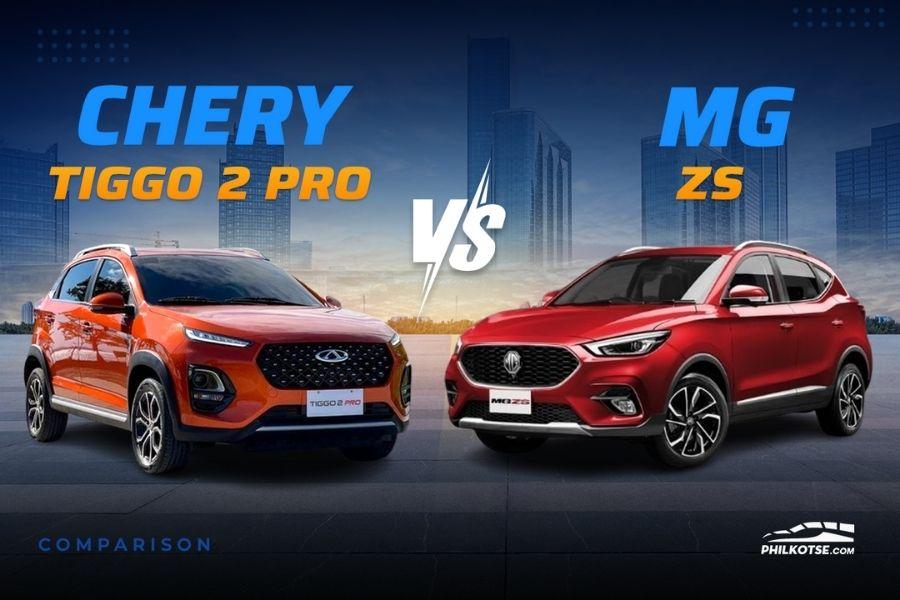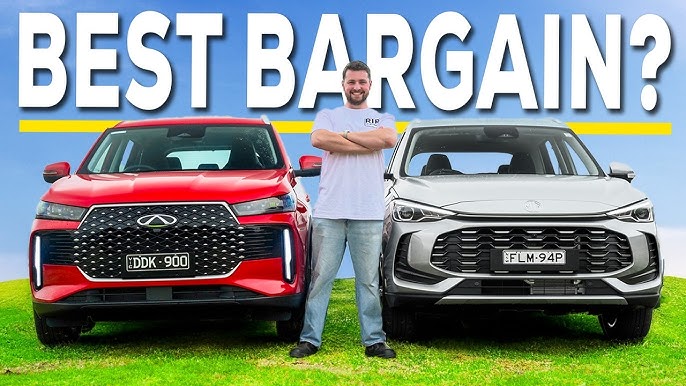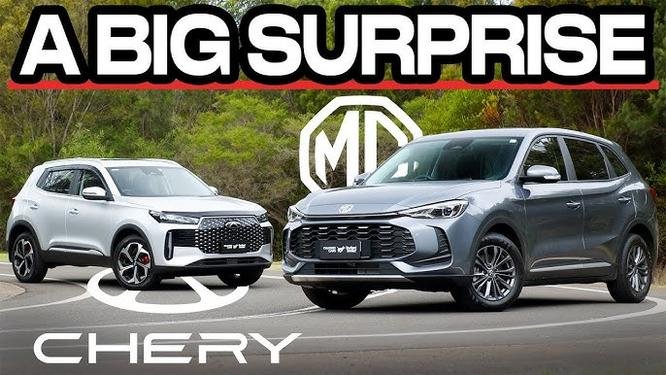Visual Verdict: Chic Design and Spacious Layout
Step inside either cabin and that first impression evolves. The Tiggo 4 Pro greets you with a satin-chrome-trimmed dash, punctuated by a floating 9-inch touchscreen perched above stitched soft-touch materials. It feels thoughtful, like Chery wanted you to think “premium” without seeing “budget” stamped anywhere. Meanwhile, the MG ZS counters with tall greenhouse windows and wide door openings. Its large underseat cubbies, deep door bins, and clever seatback nets turn the interior into a quietly adept organizer. You could stash your gym bag, a couple of grocery sacks, and still have room to spare.

Light plays a surprising role in both cabins. Soft ambient strips cast a warm halo over passengers when dusk falls, transforming routine city commutes into something you almost look forward to—rather than a nightly chore. I recall a night last winter, creeping through downtown, wicked cold outside but mellow pastel glows inside. It felt cinematic, like a slow-burn indie film scene, only I was in my own compact SUV. Designers nailed that calm, upscale vibe that larger luxury crossovers bill at triple the price [2].
Space is where perceptions get tested. On paper, the Tiggo 4 Pro’s trunk measures 340 liters versus the MG ZS’s 448 liters—a near 30 percent edge to the ZS—but real-world use still surprised me. Those extra centimeters translate into room for two large suitcases standing upright plus a couple of duffels, whereas the Tiggo’s 340 liters handle one big roller bag and a backpack with a bit of creative angling [3]. See the breakdown below:
| Model | Trunk Volume (L) | Rear Seat Fold |
|---|---|---|
| Chery Tiggo 4 Pro | 340 | 60/40 split |
| MG ZS | 448 | 60/40 split |
Both SUVs handle packaging cleverly—hidden cubby trays under the load floor, slots behind the side panels, and seatback hooks for shopping bags. It’s that sort of thoughtful detail you stumble upon only when you live with a car for days, not minutes. Anyway, if you’re curious how other small crossovers balance flair and utility, check out our in-depth look at the 2025 Suzuki E-Vitara.
Engine Edge: Driving Dynamics and Thrifty Fuel Use
Under the bonnet, the story shifts from style to substance. Both the Tiggo 4 Pro and MG ZS rely on 1.5-liter four-cylinder engines, but their character could hardly be more different. Chery’s turbocharged unit pushes out a sprightly 108 kW and 210 Nm of torque—just enough zing to make merges and overtakes feel punchy—while the MG ZS’s base 81 kW, 140 Nm naturally aspirated mill leaves you nursing highway on-ramps if you’re not revving hard [1]. Upgrade to the ZS Turbo, and that power curve jumps toward 158 kW; suddenly, the MG sheds its wallflower past and jolts forward with commendable verve [3].
Driving them back-to-back, I noticed the Tiggo’s CVT likes to hold a steady, confident hum—even on gentle hills—so you arrive expecting smooth progress. The ZS’s four-speed automatic, by contrast, downshifts with a chirp, reminding you you’re in a budget SUV every time it hunts for the right gear. A test video shows the Tiggo’s transmission smoothing out rolling gradients while the MG’s gearbox can feel a touch clumsy at low speeds [5]. That said, I’ve got a soft spot for that downshift bark; it sounds alive, not like an appliance.

Fuel economy figures play out like a strategic game. The factory claims for the ZS sit at 6.7 L/100 km, but in city traffic I’ve seen numbers creep toward 7.4 L—and spike past 10 L/100 km if you can’t resist frequent stop-start runs [3]. Meanwhile, the Tiggo 4 Pro’s turbo often returns around 7.5 L/100 km on open roads, but it’ll flirt with 9 L/100 km under spirited acceleration. That’s the trade-off of thrill for thrift.
Beyond raw numbers, though, lies feel. Even if you’re no petrolhead, you notice how steering weight, brake feedback, and engine response combine to shape each journey. I remember a windy back-road run where the Tiggo’s taut throttle mapping and crisp front-end feel made corners addictive—yet on ugly pavement, the MG ZS’s softer spring rates felt like a gentle mattress, soaking up potholes with surprising composure [2]. Choice really boils down to your personality: road-hawk or comfort-cruiser?
For another perspective on how ride comfort influences overall enjoyment, consider checking our coverage of the 2025 Suzuki E-Vitara.
Digital Domain: Connected Tech, Safety Features, and Cabin Comfort
Slide into either cockpit and the tech smorgasbord greets you: big screens, digital clusters, and enough safety assists to make highway miles feel less daunting. The Tiggo 4 Pro nudges ahead with a crisp 10.25-inch touchscreen paired to a fully digital instrument cluster—both capable of wireless Apple CarPlay and Android Auto. It’s intuitive, quick to respond, and nearly bezel-less, making you forget the days of black-plastic bezels and fiddly dials [1]. The MG ZS takes a more conservative route with an 8-inch display that still supports CarPlay and Android Auto—but via USB tether rather than wireless. It works fine, though you might miss the freedom of clipping in a phone just once and letting it link seamlessly every time you climb aboard.
When darkness falls, convenience lights guide your every move: puddle lamps casting logos on the ground, footwell LEDs offering a soft glow, and roof-liner strips that shift color at the press of a button. It’s those little gestures that make you feel looked after—a subconscious comfort factor often overlooked in this price bracket [3].
Safety tech further raises the bar. Standard on the Tiggo 4 Pro are six airbags, electronic stability control, and rear parking sensors. Choosing the MG ZS Essence or Turbo unlocks lane-departure warning, blind-spot monitoring, and adaptive cruise control. These systems aren’t just marketing fluff; they genuinely ease fatigue on long runs by keeping you centered and galloping behind traffic with less sweat [2]. Even a brief activation of the ZS’s lane-centering nudges keeps your focus sharp when highways blur into monotony.
Sound insulation reveals another twist. The Tiggo deploys thicker windshield glass and additional cabin seals, so highway speeds become a low murmur. In the MG ZS, you can hear a bit more road and engine clatter—nothing unbearable, but a reminder you’re not in a luxury class. Curious about how top-tier crossovers tackle hush-house discipline? See our deep dive into insulation in the 2025 CX-60 review.
Budget Breakdown: Long-Term Costs, Warranty, and Resale Value
If design and performance set the stage, long-term ownership costs determine whether you keep smiling at the pump or dread every scheduled service. The Tiggo 4 Pro offers a 5-year unlimited-kilometre warranty—no fine-print ceilings to worry about—while the MG ZS extends coverage to 7 years or 150 000 km, whichever comes first [2]. That extra buffer can feel priceless when unexpected repairs crop up, especially as vehicles age beyond warranty.
Routine servicing adds its own layer to the ledger. Tiggo’s recommended 10 000 km or 12-month checkups typically fall around $200 CAD, thanks to simpler parts and widespread dealer networks. MG ZS owners report closer to $250 CAD per 15 000 km interval—fine if you’ve budgeted accordingly, but a noticeable difference over five years [3].

Depreciation figures reveal how much cash you’ll recoup at trade-in. After three years, the MG ZS typically holds about 45 percent of its original sticker, while the Tiggo 4 Pro lands closer to 40 percent—nothing catastrophic, but a tangible 5 percent difference when it’s time to upgrade [1]. Break it down in table form:
| Category | Chery Tiggo 4 Pro | MG ZS |
|---|---|---|
| Warranty | 5 years/unlimited km | 7 years/150 000 km |
| Service Cost (Annual) | ≈$200 CAD | ≈$250 CAD |
| Resale Value (3 yrs) | ~40 % | ~45 % |
All told, you might save on Tiggo’s entry price and servicing but feel comforted by MG’s longer warranty and stronger resale. It’s a classic higher-risk, higher-reward vs slower-and-steadier calculus. And if you want to see how a similarly priced contender juggles those same numbers, take a look at our analysis of the 2025 Suzuki E-Vitara.
Key Takeaways & Final Words
So, which compact SUV wins your heart—and your wallet? If I’m honest, I found the Tiggo 4 Pro’s cabin tech and turbo zest hard to ignore: it feels like a next-generation interior wrapped around a spunky powertrain. But those who prize long-term peace of mind with fewer service headaches might lean toward the MG ZS, especially in its Turbo form, which brings the performance drama without stripping away daily comforts.
Neither choice feels like a compromise so much as a question of personality. The Tiggo invites you to embrace a sporty edge, to engage with every throttle tip and touchscreen swipe. Meanwhile, the MG ZS soothes, delivering familiar simplicity, cushier suspension, and a warranty that practically tucks you in at night. In my book, short trips to the grocery store or long highway stretches become markedly different experiences based on that fundamental character.
I’d strongly recommend lining them up at your local dealer, driving your usual commute in each one, and seeing which smile sticks. After all, the best compact SUV isn’t the one that looks good on paper—it’s the one that makes daily life feel just a bit brighter.

